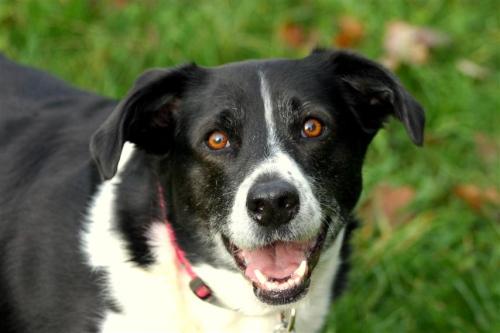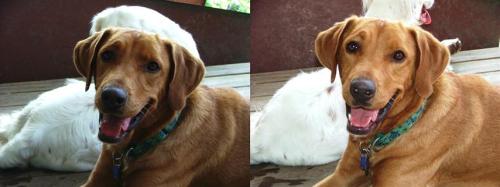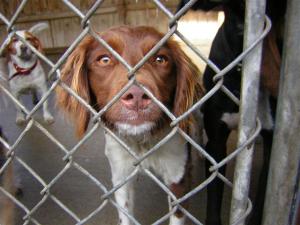With exceptional resources like www.petfinder.com, www.adoptapet.com, and www.rescuegroups.org, it is easier than ever for people to see and choose adoptable pets. For potential adopters who get overwhelmed with emotion when walking through shelters, or who are sensitive to the sounds or smells of crowded facilities, these resources prevent the need to step foot in a shelter until a potential match is found. Websites such as these have made it possible for people to “visit” many shelters at once, scanning hundreds of animals in just a few clicks, without having to drive from place to place. With the help of the internet, foster-based rescue groups have emerged as an incredible force in animal adoptions, all made possible because of their ability to present their animals on the web for people to see. This media outlet- what I like to call “virtual shelters”- comes with a couple limitations. The sheer number of animals available to choose from when searching online can be such that it is easy for pets to get overlooked and so first impressions are a must, and in that vein, a picture really does say a thousand words. When scanning pages on Petfinder, for example, you see a pretty simple list without a lot of personal detail, and you must click to read more detailed biographies. What makes the difference? Tiny thumbnails.

Here you have one dog straining on the leash, disengaged, one dog that has no photo at all, two photos that don't stand out really well in thumbnails and have typical shelter backgrounds (leash, half-bodied volunteers, Helen looks a little nervous...) but Tasha's photo stands out AND she looks happy.
Here are some tips that will help with your pet photography in general but especially when concerning adoptable pets. You do not have to be a great photographer to take great pet adoption photos! These tips are for anyone at any skill level or with any camera.
- Get up close and personal. Especially when petfinder thumbnails are concerned, you need to fill up the space with a nice shot that will draw someone in. Engaging the viewers with a soulful glance can make a huge difference.

- Get down on their level. Typical top-down photography is a staple among shelter volunteers, but this can really create a disconnect. Top-down angles are generally unflattering, and without a zoom (or an edited crop) they create distance between the viewer and the animal.

- Watch your lighting. Natural lighting is always best. Try outside on an overcast day for best results, or in a well-lit area. Good light will eliminate blurry photos and give you a great opportunity for action shots. Sunshine is not always your friend, although sunny days can bring out the shine and features of black animals, especially. Be sure, though, to use an indirect angle. Do not put the sun behind the animal you’re photographing, as you may end up with a pet silhouette in front of a glaring bright spot. Be careful when using a flash so that you do not end up with unflattering “laser eye” effects, which creates another disconnect. A direct flash can also wash out features or create distracting shadows. That’s not to say that there aren’t great opportunities for wonderful flash photography, especially when you are going for action shots or the dog is backlit.

- Catch the side of the pet that you want to promote. Candid shots of animals having fun are sometimes the best, most engaging photos. Don’t show dogs straining on a leash, barking, jumping up, or cats hunkered down in a litterbox or hiding in the corner. Playing with toys, showing off tricks, running and having fun, all these things are great ways to show off what this pet has to offer. It may take some time to get an animal to warm up and come out of its shell, but it’s good for them to have that interaction and it’s worth the time in order to help them present better in their photos. Happy expressions will make people happy but sad, depressing photos of animals that look like they want to shrink into nonexistence will not win anyone but the saddest saps (yours truly!) over.

- Editing can be your friend, just don’t overdo it. A photo doesn’t have to be perfect right off the camera in order to make a great web shot. A few minutes spent adjusting color and exposure, cropping, editing out intrusive background distractions, etc, can make a huge difference. If you have Photoshop or a similar program and some extra time, try removing leashes, clutter, even people if possible so that your photo looks more natural. However, not every problem can be easily fixed and some things are just best left the way they are. I have seen an increasing trend lately where enterprising photographers use something like Microsoft Paint or other basic editors to basically paint black irises over the “laser eyes.” This doesn’t look so bad at thumbnail level, but it becomes pretty obvious when the photos are enlarged and can give a creepy look to the photo.

- Look behind/around the pet. Staging photos doesn’t come naturally to everyone, but it does pay to practice and learn and to really examine what’s going on in the viewfinder before you snap a picture. Leashes and cages and concrete floors make for dull scenery- just adding a colorful backdrop can make a big difference. Taking photos in kennels or cages with urine or feces present is a huge turn-off for people- if you get home and find out that there is some waste in your photos, use a photo editor or toss those pics and try again.

- If you have multiple photo slots, use them wisely! Don’t take multiple similar photos and load them up. On Petfinder, for example, you have the option to upload three photos. I suggest you try to have a head shot (as we covered!), a good profile or other body shot that helps people see what the animal looks like, and then a just plain for-fun shot.
Good luck and happy shooting!















